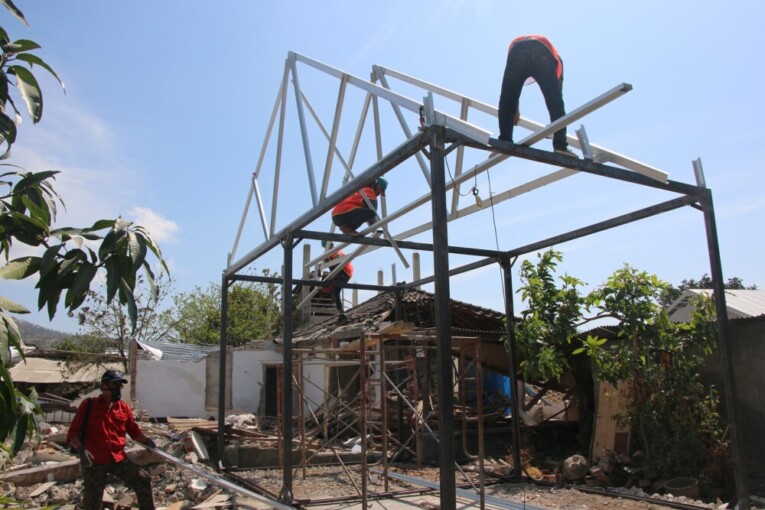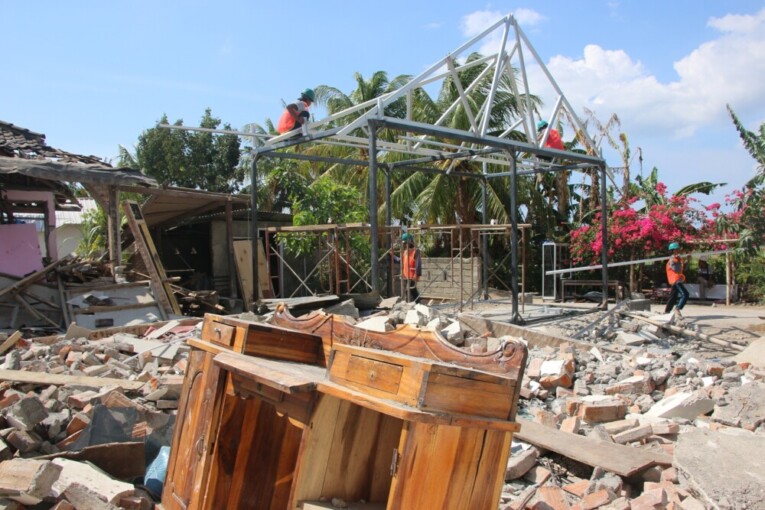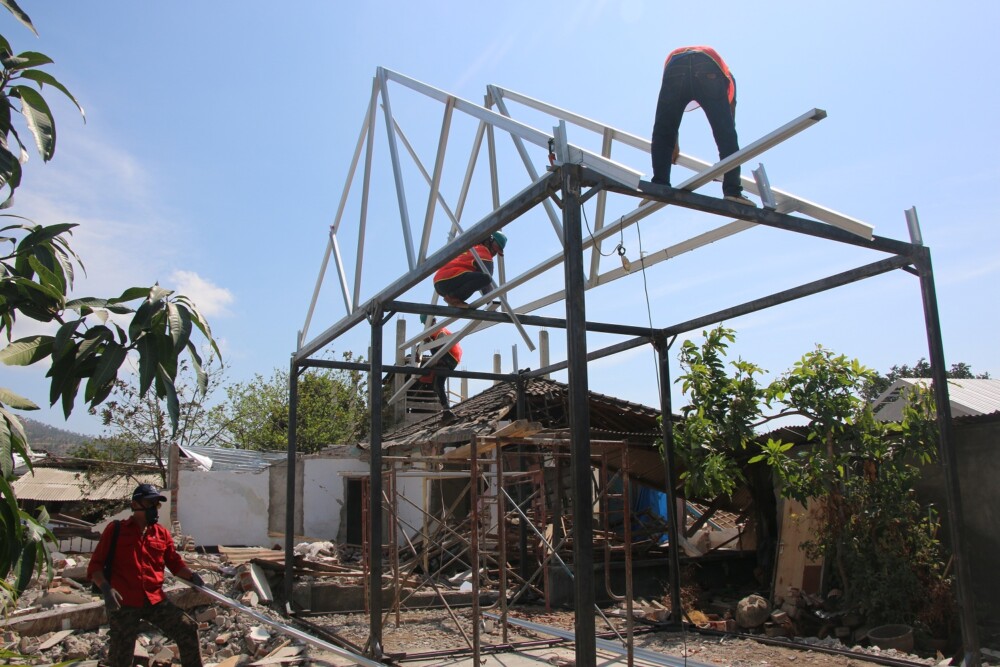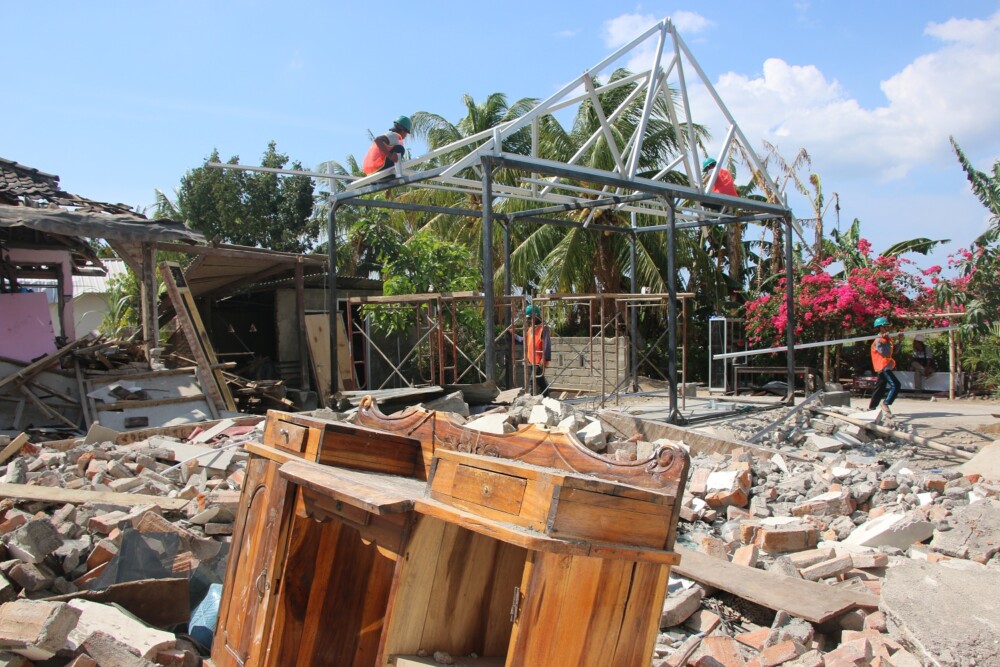The earthquake that struck West Nusa Tenggara has devastated the economy of northern Lombok. Most of the houses and buildings were heavily damaged. For example, in Pemenang Sub-district, North Lombok, remnants of the uninhabitable buildings were demolished because they might collapse if another earthquake occurs. As a result, many survivors chose to live in evacuation camps to minimize risks. Every day, they sort and collect some of the building remnants that are usable such as bricks, windows, and door frames.
To increase evacuees’ comfort while living in the camps, Faculty of Engineering UGM took the initiative to build transitional housing. These 3×6 temporary houses are built in residential areas using mild steel material with steel frames. They are expected to provide comfort for the residents.
The construction is carried out by students of Lombok Disaster Response Community Service program. They surveyed the houses where transitional housing will be built, helped removing the debris, and socialized the program to the community.
Farid Fadlillah stated there will be 50 houses to be built in Karang Pansor and Karang Petak Villages. The student from Department of Architecture and Planning explained he and other students collected data on houses that urgently needed reconstruction. “We asked the village head for the data,” said Farid on Monday (9/3) when doing this program in Karang Pansor.
He explained that the socialization of this program was not easy since there are only 50 houses built for two villages, while one village consisted of 300-450 houses that have mostly been demolished. “At first, some residents were reluctant. But after we approached them, they finally agreed and showed their enthusiasm in helping.”
For the construction process, welders are hired and supervised by students, while residents build the plywood walls themselves. The materials are provided by Faculty of Engineering UGM which was financially assisted by the Transportation Ministry.
The construction of each unit takes around 6-7 hours and costs Rp13,5 million. In this process, Engineering UGM partnered with Kukuh Sugiarto (45), owner of a construction company and alumnus of Civil Engineering UGM.
According to Kukuh, his involvement in this program began with his initiative to contact a Vocational School lecturer to help map the damaged buildings in Mataram, Lombok. “Then, I was contacted by Ashar and I tried to help as fellow alumni. For the construction, I applied the design and trained ten welding workshop owners in Lombok,” he said.
So far, five houses have been finished and Kukuh hoped the students can supervise the remaining construction process. “We want the students to understand every problem and find the solution because there are technical and social problems that they might not find on the campus,” he said.






